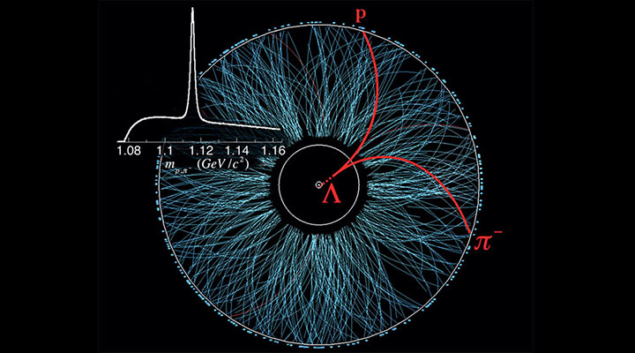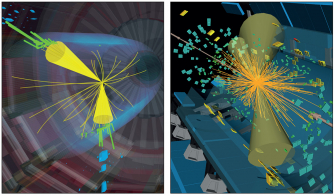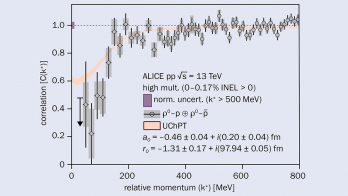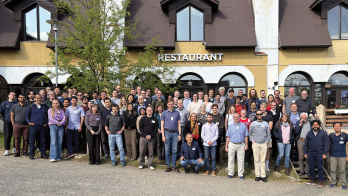

Experiments at the Relativistic Heavy Ion Collider (RHIC) at Brookhaven National Laboratory have found that droplets of quark–gluon plasma (QGP) can spin faster than any other fluid. The immensely hot and fast-expanding QGP is already known to behave as a near “perfect” liquid, exhibiting a viscosity lower than any other. Now, researchers on RHIC’s STAR experiment report that the vorticity (or curl) of the fluid produced in RHIC’s relativistic heavy-ion collisions is about 9 × 1021 s–1. That exceeds the rotation of a super-cell tornado by a factor 1020 and is 14 orders of magnitude higher than any fluid ever observed, beating the previous spin record held by nano-droplets of superfluid helium. The results will aid descriptions of quark–gluon plasma and, with more data, offer a way to measure the strength of the plasmaʼs magnetic field.
The past decade has seen major advances in our understanding of the quark–gluon plasma, with RHIC experiments also reporting recently that the extreme state might even form in collisions involving very light nuclei such as deuterium – in line with recent observations by the LHC experiments of proton-collision systems.








